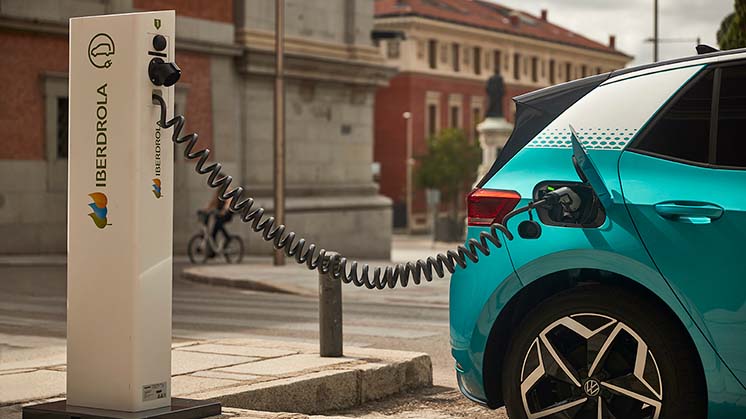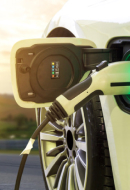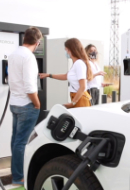Advantages of the electric car
Why should I buy an electric car?
Despite the exponential increase in sales every year, some people are still not aware of all the advantages of the electric car over the conventional car. Economic savings and the absence of emissions are some of the most popular arguments for opting for this sustainable alternative to internal combustion cars. A technology that has ceased to be the future of mobility to become firmly established in the present.

According to the World Economic Forum, global electric car sales will reach 6.6 million in 2021, almost double the number of new electric vehicles sold in the previous year. The advantages of the electric car over the combustion car are becoming increasingly clear to the user. This is reflected by the fact that the same number of electric cars are bought in one week today as were sold in the whole of 2012, a key year in which the nascent electric vehicle (EV) market began to gain momentum.
Factors such as accelerating climate change and the global commitments made to achieve the net-zero goal are key drivers in the global shift towards zero-emission driving. While adverse circumstances such as the COVID-19 economic crisis have negatively affected the market for petrol and diesel cars, demand for electric cars continues to increase.
Below we highlight seven advantages of the electric car over the traditional car, interesting to take into account when planning our transport habits and considering making the leap to electric mobility.
 Zero emissions
Zero emissions
As the most obvious attribute, electrically powered cars do not need to burn fossil fuels to operate and therefore do not produce direct carbon dioxide emissions. As they do not rely on a combustion engine, they do not require an exhaust pipe through which to expel the gases and particulates resulting from combustion. In this way, the car does not leave a trail of pollution in its wake, nor does it expel smoke of any kind.
While it is true that a larger carbon footprint is generated during the manufacturing process of a 100% electric car —including the extraction of the necessary material resources and the production of the lithium-ion batteries— than during the production of a conventional car, these emissions are quickly offset during the use phase of the car. Based on the energy mix of electricity generation in the European Union, the payback of these CO2 emissions is reached after approximately 80,000 km. Thereafter, the more the electric car is used, the more emissions are avoided compared to our previous vehicle.
A net zero carbon footprint is a major attraction for today's environmentally conscious and clean energy consumers, as well as a key attribute for the Paris Agreement signatory countries to promote electromobility —in line with their commitment to reduce greenhouse gas emissions to net zero by 2050.
 Electric car savings
Electric car savings
Electric motors, unlike internal combustion engines, benefit from a very high energy efficiency —typically around 90-95 %, compared to 20-35 % for the most modern combustion engines on the market. If the electric car consumes approximately one third less energy to drive 100 kilometres than a conventional car, this translates into a significantly lower cost per kilometre and consequent economic savings.
In addition to their intrinsic energy efficiency, electric cars today benefit from numerous tariffs and special schemes to enable users to integrate the charging of their electric cars into their household electricity costs in a simple and sustainable way. This makes them easier to monetise in the medium term compared to combustion engine cars.

Electric car batteries
Everything you need to know about electric car batteries.

History of the electric car
Electrically powered cars have been on the road for almost two centuries.

Infraestructure for electric mobility
Are our roads ready for the electric vehicle revolution?
 Easy maintenance
Easy maintenance
Another benefit of electric vehicles is that they have very low maintenance costs, as no oil, filter or coolant changes are required for the operation of the electric motor. A routine check of the brakes, tyres, dust and pollen filters —common to all vehicles— as well as a periodic check of the condition of the batteries would be enough to keep everything under control.
 Goodbye to mechanical breakdowns
Goodbye to mechanical breakdowns
With no internal combustion engine and no clutch gearbox, electric cars have far fewer moving parts exposed to wear and tear, ensuring a failure rate of close to 0 %. We can forget about common worries such as the condition of the timing belt every time we go on a journey.
 Tax advantages of the electric car
Tax advantages of the electric car
Another feature that encourages buyers to invest in electric cars is their tax advantages. These vary from country to country and even from community, state or municipality to community, state or municipality, but they follow the trend of a strong reduction of taxes associated with the vehicle to encourage sustainable mobility.
In some towns in Spain, for example, these cars are exempt from paying registration tax and can take advantage of road tax rebates (Motor Vehicle Tax). Owners of electric vehicles can even deduct the full VAT, if they can prove that they are an essential tool for their business activity, or partially, if they are only used for professional or business purposes.
On the other side of the Atlantic, in Mexico, owners of private hybrid and electric cars are exempt from paying verification and tenure fees for the first few years, in addition to not paying tolls. In the United States, taxpayers can receive up to $7,500 as a federal tax credit for electric or plug-in hybrid vehicles purchased after 2010.
 A car for the city
A car for the city
As we said, electric cars are no longer the future of road mobility, but the present. Their "zero emissions" status is our best letter of introduction to have priority access to restricted areas in city centres, finding exclusive —and in many cases free— regulated parking areas in the busiest neighbourhoods or entering cities even when they have an active anti-pollution protocol. In Spain, this has long been put into practice through the zero-emissions label awarded by the Directorate- General for Traffic (DGT), the highest of its environmental labels.
An additional advantage of driving an electric car in the city is the consistent expansion of electric vehicle charging stations. As they do not require large underground tanks to hold thousands of litres of fuel, these so-called "electric charging stations" are ready to conveniently serve where they are most needed.
 Maximum comfort
Maximum comfort
The very experience of driving or travelling in an electric car has attractive advantages or improvements over the traditional experience. The elimination of the combustion engine is perceived in the provision of more living space, the reduction of noise and the absence of vibrations, heating or possible odours. A comfort of use that helps the well-being and enjoyment of all passengers, especially people sensitive to strong sensory stimuli who tend to get dizzy, as well as children and pets.





